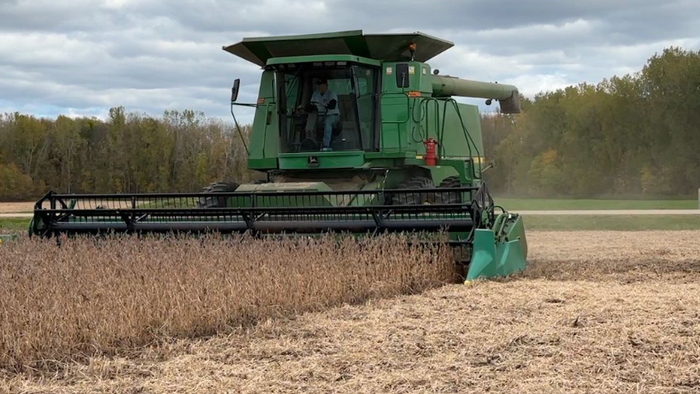


At the end of last week, new details emerged via a Wall Street Journal report outlining the Trump administration's potential farm bailout, estimated to be in the range of $10 billion to $14 billion, aimed at cushioning farmers amid China's pivot in agricultural purchases to Brazil. Trump blasted China last week, saying Beijing was "hurting" American farmers during the ongoing trade negotiations, and noted that soybeans would be a major topic in his upcoming meeting with Chinese President Xi Jinping.
Soybeans and agricultural purchases have yet again become a central battleground in US-China trade talks.
To make sense of it all, Bloomberg provided readers with a Q&A breakdown about the soybean debate ahead of the Trump-Xi meeting at the Asia-Pacific Economic Cooperation summit, which begins in late October:
Why is China refusing to buy U.S. soybeans?
China hasn't purchased any soybeans from the current U.S. harvest. U.S. Treasury Secretary Scott Bessent and other administration officials say Beijing is using soybeans as leverage in broader trade negotiations. Earlier this year, the two countries came to a temporary truce that lowered tariffs and eased export controls, but that agreement expires in November. Trump has accused China of holding off "for negotiating reasons only." This season, Beijing has instead turned to South America. Brazil and Argentina have been supplying soybeans for China's animal feed producers and oil extraction "crushers," filling a need usually met by the U.S.
How is this impacting U.S. soybean farmers?
The fallout for farmers has been significant. In 2024, the U.S. made up about one-fifth of China's soybean imports, worth more than $12 billion, and those sales represented more than half of the value of all U.S. soybean exports. Without that market, growers are left with fewer buyers and weaker prices. Across the U.S. Midwest, farmers are watching storage bins fill up as harvests roll in. Researchers at Purdue University warn that higher costs for fertilizer, seed, and chemicals — combined with falling soybean prices — are squeezing profits. Many growers are choosing to store crops rather than sell at steep losses. That pain ripples across the industry. Grain elevators, processors, and the railroads that move soybeans across the country are all affected by the slowdown.
Does Washington have leverage to pressure Beijing into changing its policy?
The Trump administration has suggested it does. Bessent predicted a "pretty big breakthrough" from the next round of talks. Trump has promised to put soybeans at the top of his agenda when he meets Xi. However, Republican senators left a meeting on Sept. 30 with the U.S. ambassador to China discouraged, saying Beijing has little intention of resuming purchases anytime soon. Trump has said his administration will use funds collected from tariffs to provide farmer relief. On Sept. 24, Agriculture Secretary Brooke Rollins promised a new aid package "in the next couple of weeks," though the federal shutdown complicates the picture.
Are there risks for China?
Yes, but they're limited in the short run. China's massive animal agriculture industry needs soybeans to produce animal feed. But Chinese crushers and farmers have already built up higher-than-usual inventories, and government reserves provide a further cushion. That gives Beijing room to wait until early 2026 before it feels pressure to buy more from abroad. China's reliance on Brazil and Argentina brings long-term risks, however. With fewer suppliers, a future weather shock could prove costly, even as Beijing's tilt toward Brazilian beans is boosting output from the world's top grower.
What are soybeans used for?
Soybeans are essential to China's food system. The bulk of imports are crushed into meal for animal feed for pigs, which supply most of the country's meat, and other livestock. Soy oil is also widely used for cooking and food products. Soybeans are also processed into biofuels and industrial products.
Has China boycotted U.S. soybeans before?
Yes. During Trump's first term, Beijing slashed purchases of U.S. soybeans as part of the 2018–2019 trade war. That pressure helped push the Trump administration to agree to the so-called Phase One deal. Under that agreement, China pledged to buy tens of billions of dollars' worth of U.S. farm goods, including soybeans, in exchange for tariff relief. Trump later blamed his successor, Joe Biden, for not adequately enforcing the agreement. The current standoff looks similar. Once again, China is using soybeans as leverage to counter U.S. tariffs and restrictions.
Related:
Key chart to understand China's pivot:
. . .
